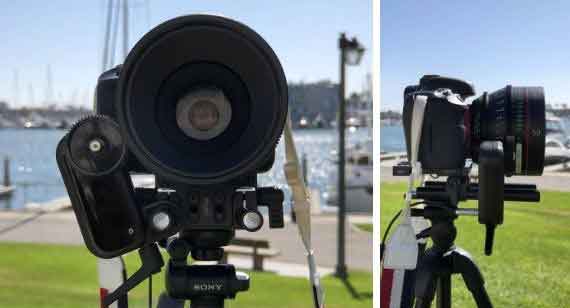Gravity Laboratories Designs Lens Control System with 3D Printing and Machining
As aerospace industry veterans, the founders of Gravity Laboratories are applying technical expertise in controls systems, mechanisms, and electronics to solve challenges in the production and film industry. The company just launched its Kickstarter campaign in order to fund a production run of its latest product Moxie, a wireless lens control system.
We spoke with co-founder, Andrew Chau, to learn how the company is using digital manufacturing technologies like 3D printing and CNC machining to accelerate its product development process.

What is Moxie and how does the product work?
Our goal at Gravity Laboratories is to empower filmmakers to tell their story. We do this by designing high-quality products and making them available at an accessible price. Moxie is a wireless lens control system. It mounts to a camera lens, and allows the user to control focus, iris, and zoom via a smartphone or handheld controller. All the electronics are integrated directly into the device and it’s powerful enough to control even the stiffest lens.
As you began designing Moxie, what were some of the challenges you overcame during prototyping?
Our goal as designers is to provide high-performance, high-quality products at an accessible price. Coming from the aerospace industry, where one is typically designing one-off flight hardware for satellites, it has been a challenge to design for manufacturability while maintaining the high level of quality and performance that is so important to us. China Metal Parts has been key in helping us overcome that challenge because it has allowed us to quickly and efficiently iterate on our design to provide the best of both worlds.
Speaking of iterations. How many major prototype versions have you worked through?
We have undergone three major prototype versions as part of our development. First, a proof-of-concept prototype to evaluate the technical feasibility of our product. Second, a ruggedized, functional prototype designed to be handled and user tested. And finally, a production equivalent prototype that implements design for manufacturability best practices.
What parts did China Metal Parts manufacture for you?
We used selective laser sintering (SLS) and stereolithography (SLA) to 3D print parts to mimic the material properties of production, injection-molded parts. We also used machined 6061-T6 aluminum for mounting features that require high stiffness and strength. In total, China Metal Parts has made more than 30 parts for us. The decision to go with China Metal Parts came down to needing a supplier that could keep up with our fast-paced development cycles.
What’s next for Gravity Labs?
We just launched our Kickstarter campaign and if successful, will use the funds to invest in production tooling. In the future, we see China Metal Parts playing an essential role in our development cycles as our company grows and develops new products.